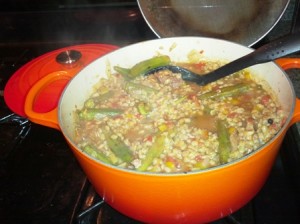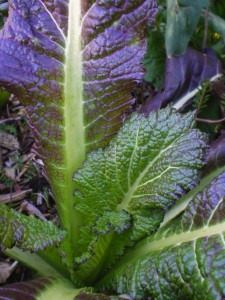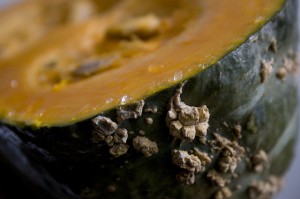Thai is one of our favorite cuisines, so we jumped at the chance to review Verve Culture’s Thai for Two Organic Curry Kits. The curry kits are imported from Thailand, gluten-free, and vegan, and come in Penang, green, and red varieties.
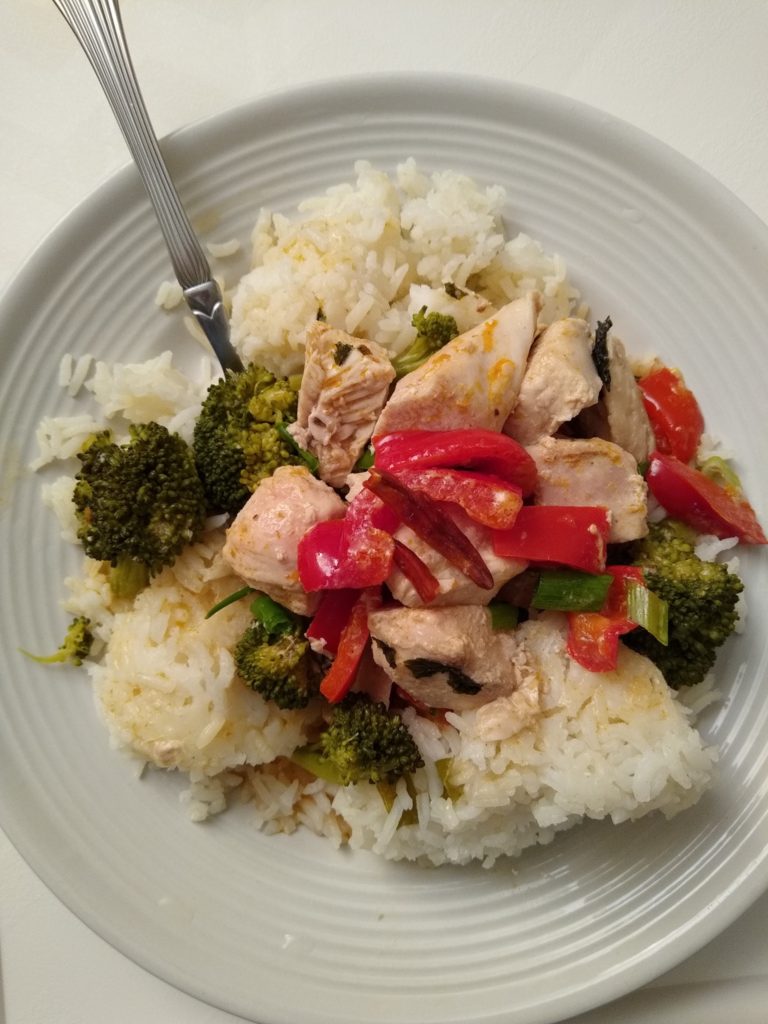
Red Curry with Broccoli & Bell Peppers. 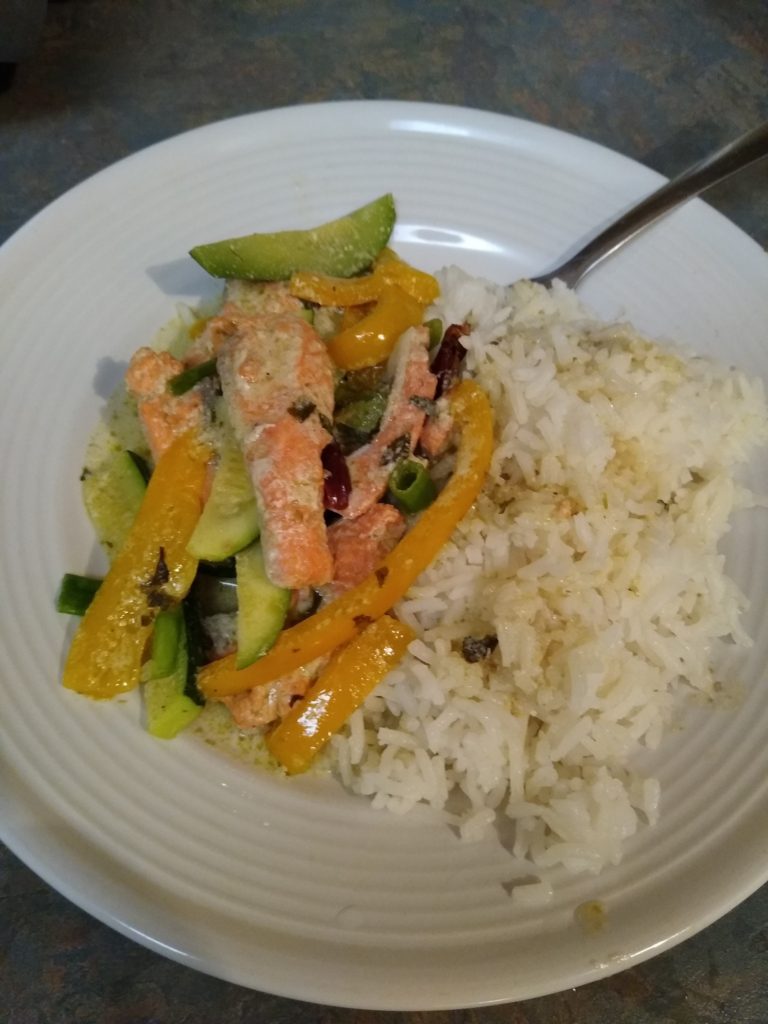
Green Curry with Wild Salmon, Zucchini & Bell Peppers
Included in each are the following organic packets: curry paste, curry seasonings, coconut milk, and dried herbs. You follow step-by-step directions, which include adding 7-10 ounces of uncooked protein and 7-10 ounces of uncooked vegetables. The recipes were well described and not difficult. You are told to use 50 to 100% of the curry paste packet depending on desired spice level, and that the dried herbs (kaffir lime leaves, chili peppers, etc.) are not meant to be consumed directly (since they just flavor the sauce).
We made the green curry with wild salmon, a small zucchini, and a small orange bell pepper. The curry went extremely well with the wild salmon. We used 100% of the curry paste packet for this dish, which turned out to be around medium spice level (high for my dining partner).
For the Penang, we went with organic chicken breast from the Lancaster Farm Fresh Co-op, an orange bell pepper, and fresh carrots. Visually, it contained orange vegetables with an orange sauce, so a different color bell pepper may have been a better idea. Scallions were added for a bit of color. 75% of the curry paste packet was used for this dish, which turned out to be around medium spice level (ok for me, but still a little high for my dining partner).
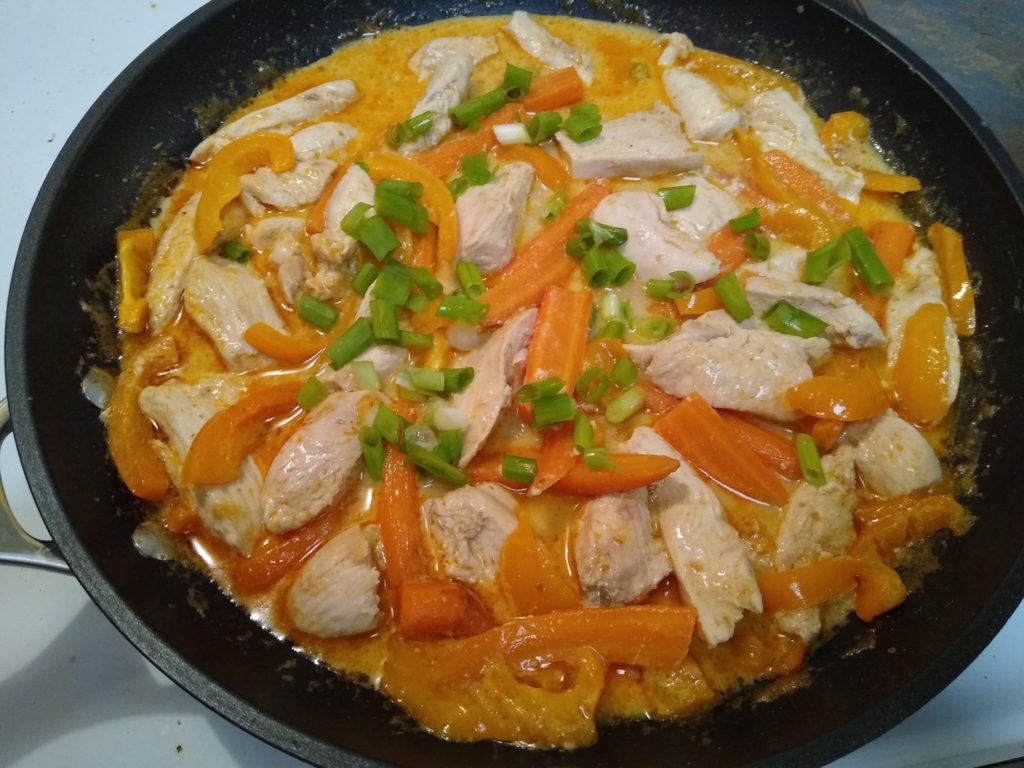
Penang Curry with Carrots & Bell Peppers. 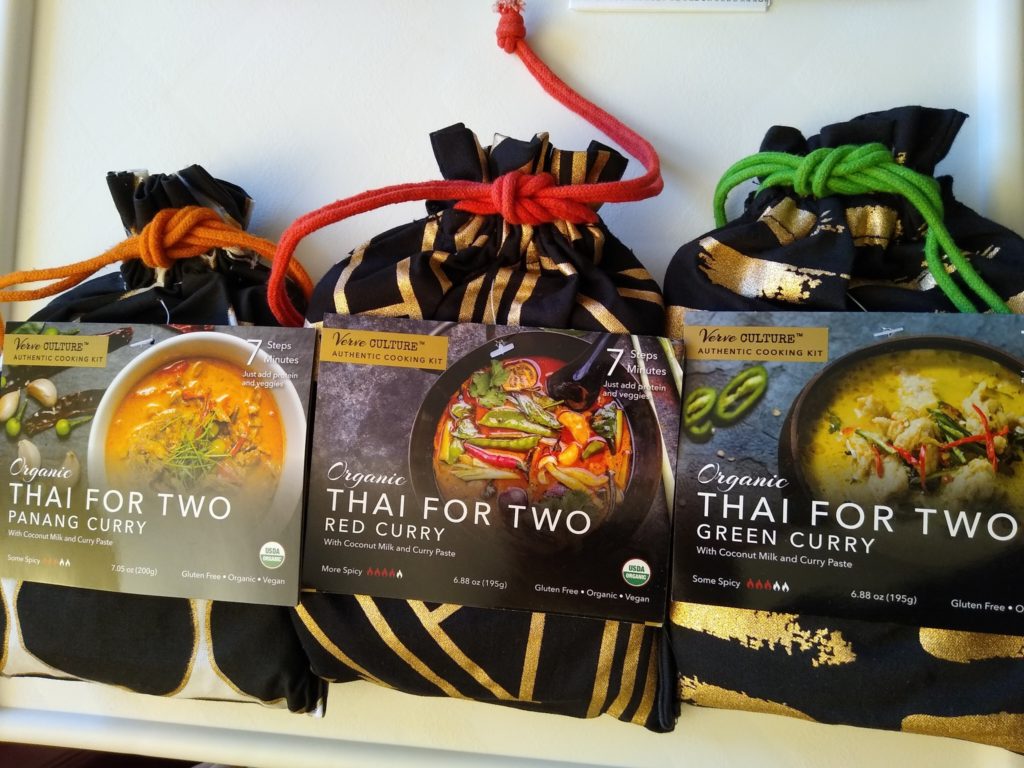
Thai Curry Kits.
We used a small red bell pepper, and Lancaster Farm Fresh Co-op broccoli and chicken breast with the red curry kit. 50% of the curry paste packet was used for this dish, which turned out to be around medium spice level (about right for my dining partner).
We definitely enjoyed all three curry varieties, since the direct from Thailand ingredients give them an authentic flavor, but our favorite was the green curry (with wild salmon), even at the 100% spice level. The kits are good for two people, but we had some leftovers of the Pinang and red varieties since we used an extra 1/4 cup of water and a pound of chicken each.
Verve Culture makes two other Thai kits: Tom Kha Soup and Pad Thai. For a limited time, there is a coupon code for your holiday gift-giving needs. Order 5 flavors of Thai for Two Cooking Kits with the code THAI4TWO.
Lancaster Farm Fresh Co-op‘s CSA boxes can be picked up at various sites in the DC area, including the Mosaic District’s MOM’s Organic Market.
-JAY

